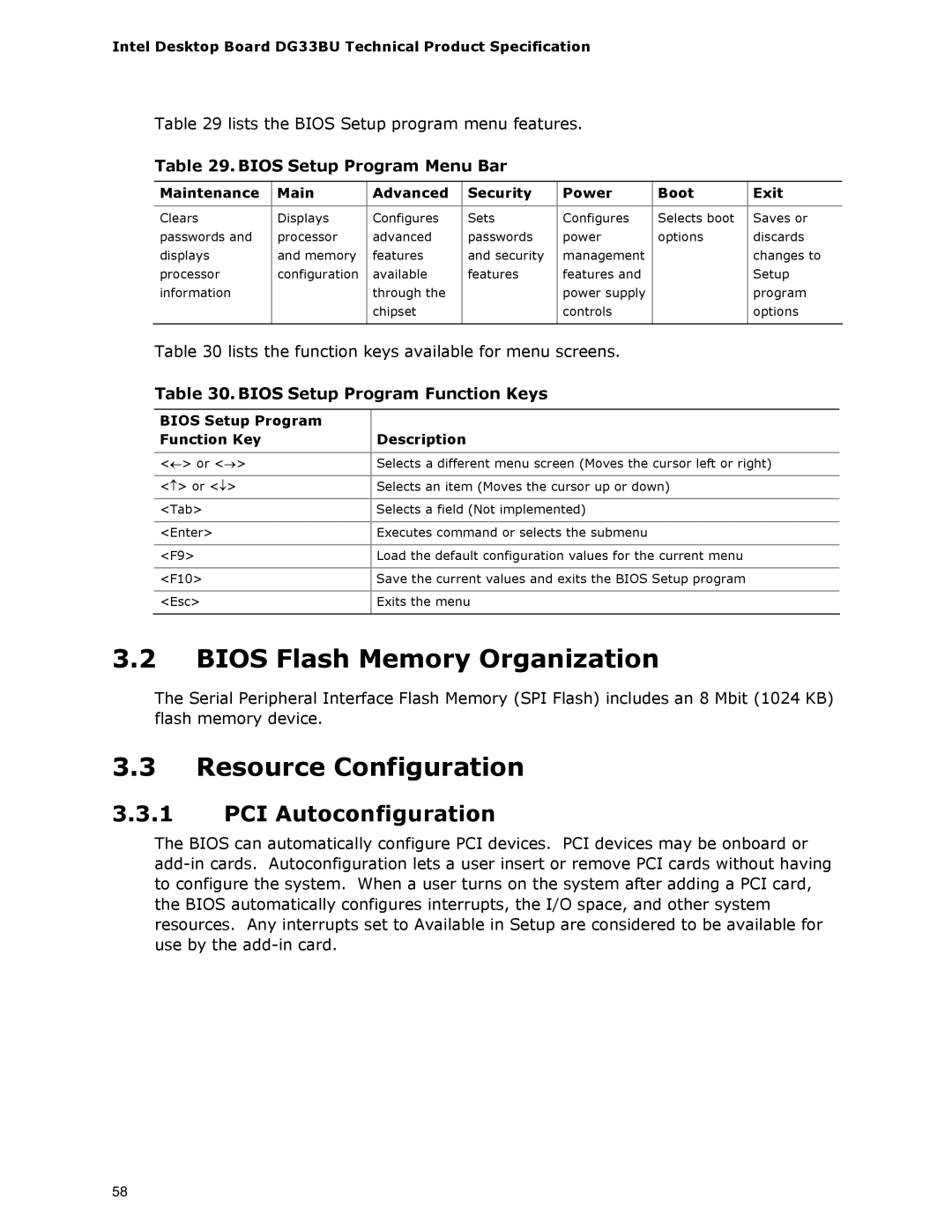Intel Desktop Board DG33BU Technical Product Specification
Table 29 lists the BIOS Setup program menu features.
Table 29. BIOS Setup Program Menu Bar
Maintenance | Main | Advanced | Security | Power | Boot | Exit |
|
|
|
|
|
|
|
Clears | Displays | Configures | Sets | Configures | Selects boot | Saves or |
passwords and | processor | advanced | passwords | power | options | discards |
displays | and memory | features | and security | management |
| changes to |
processor | configuration | available | features | features and |
| Setup |
information |
| through the |
| power supply |
| program |
|
| chipset |
| controls |
| options |
|
|
|
|
|
|
|
Table 30 lists the function keys available for menu screens.
Table 30. BIOS Setup Program Function Keys
BIOS Setup Program |
|
Function Key | Description |
|
|
<←> or <→> | Selects a different menu screen (Moves the cursor left or right) |
|
|
<↑> or <↓> | Selects an item (Moves the cursor up or down) |
|
|
<Tab> | Selects a field (Not implemented) |
|
|
<Enter> | Executes command or selects the submenu |
|
|
<F9> | Load the default configuration values for the current menu |
|
|
<F10> | Save the current values and exits the BIOS Setup program |
|
|
<Esc> | Exits the menu |
|
|
3.2BIOS Flash Memory Organization
The Serial Peripheral Interface Flash Memory (SPI Flash) includes an 8 Mbit (1024 KB) flash memory device.
3.3Resource Configuration
3.3.1PCI Autoconfiguration
The BIOS can automatically configure PCI devices. PCI devices may be onboard or
58
